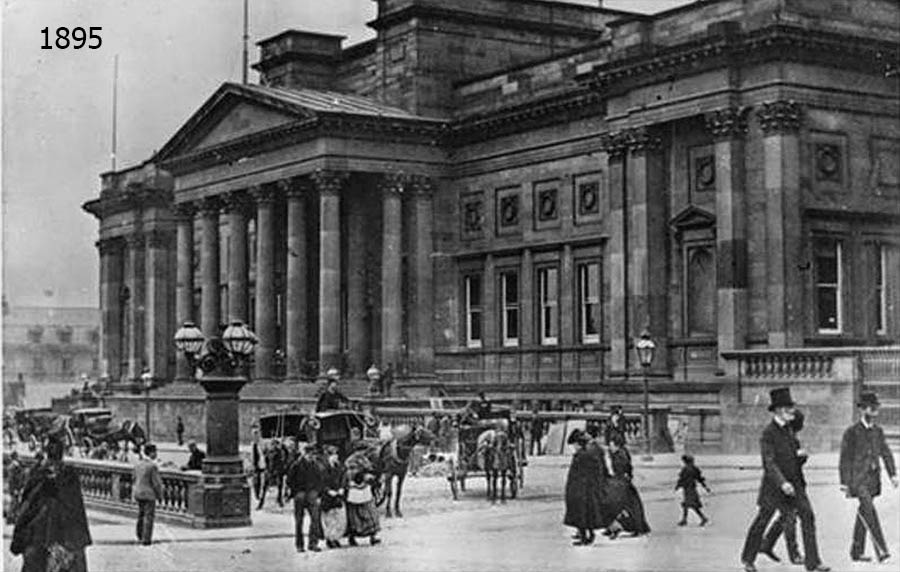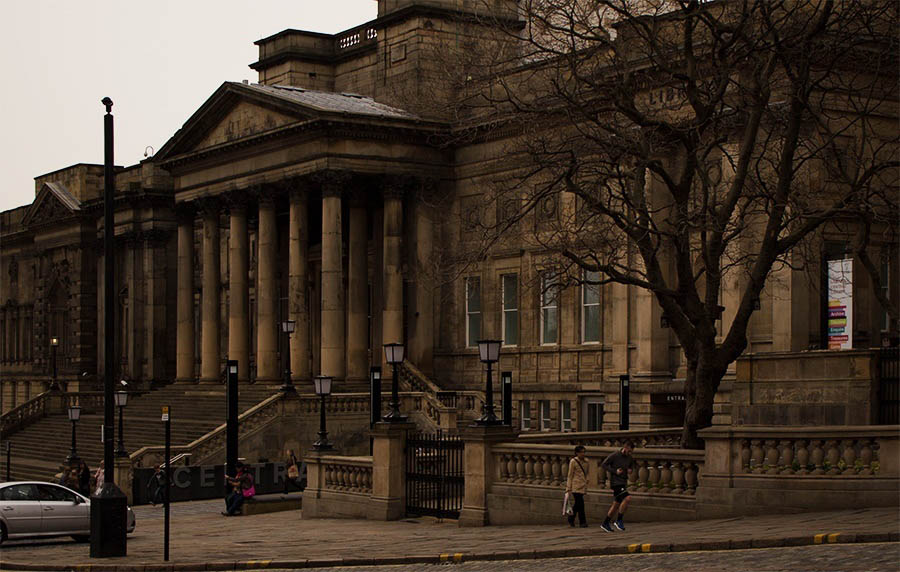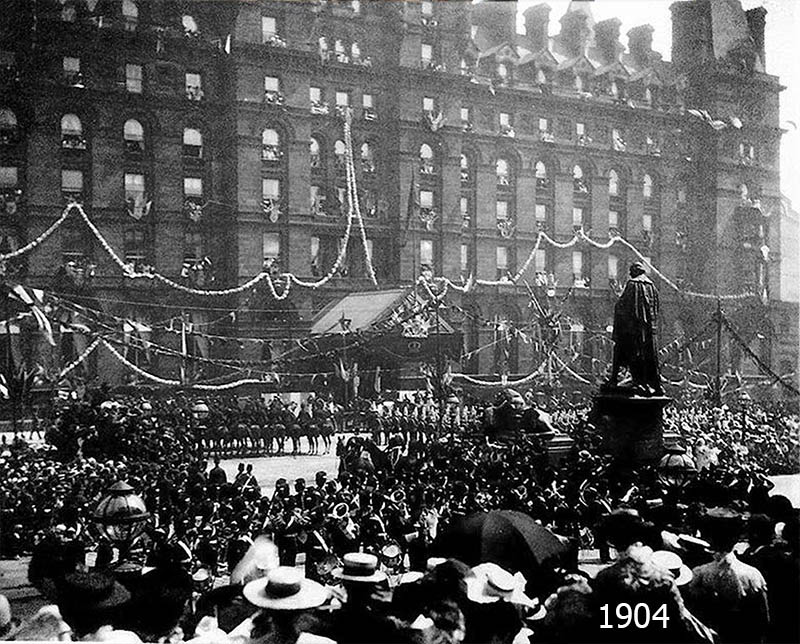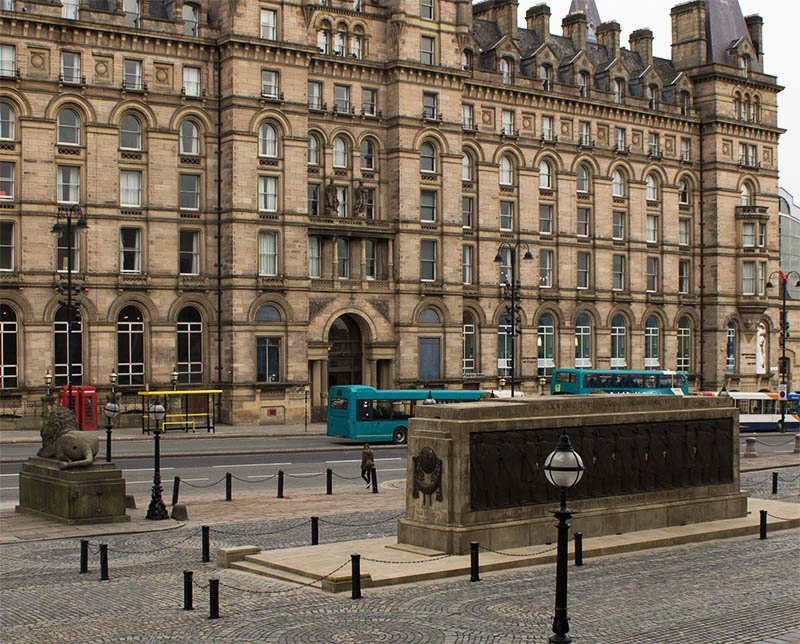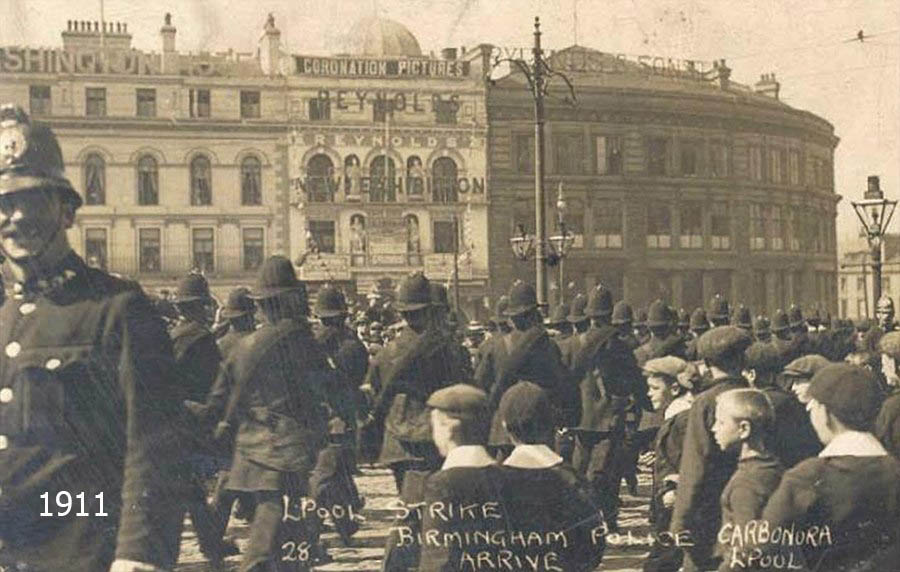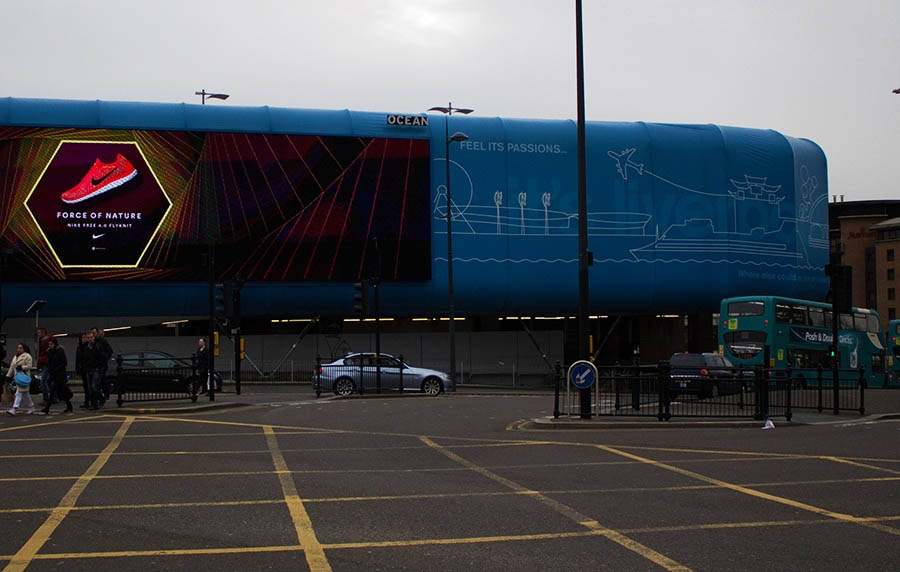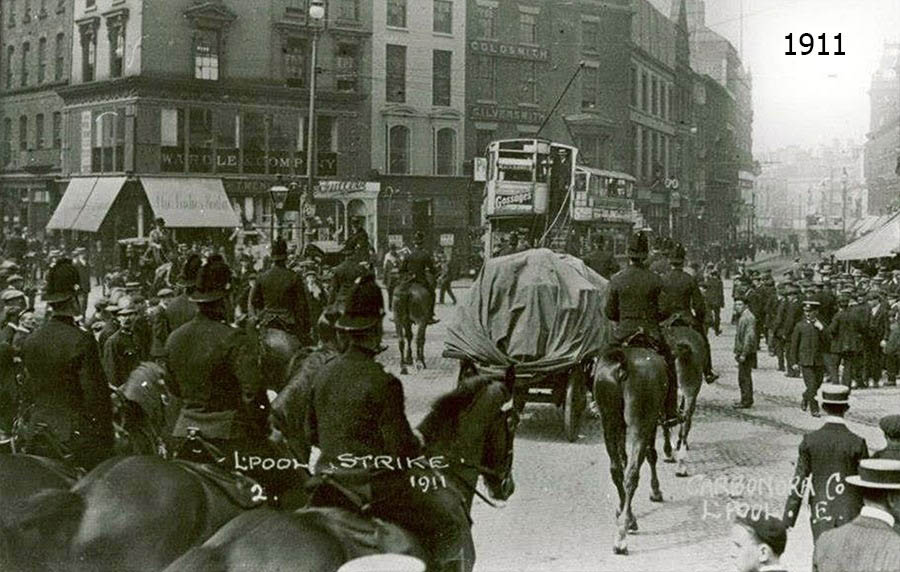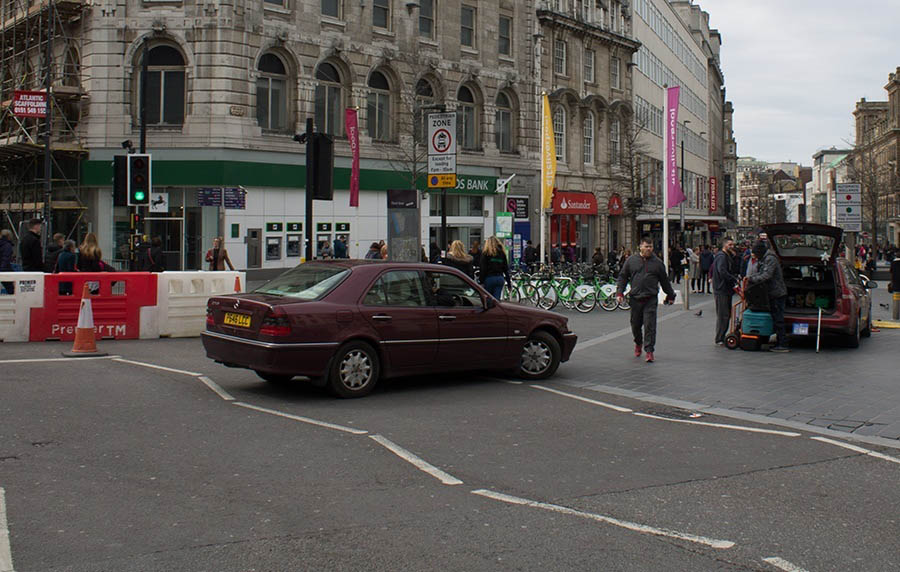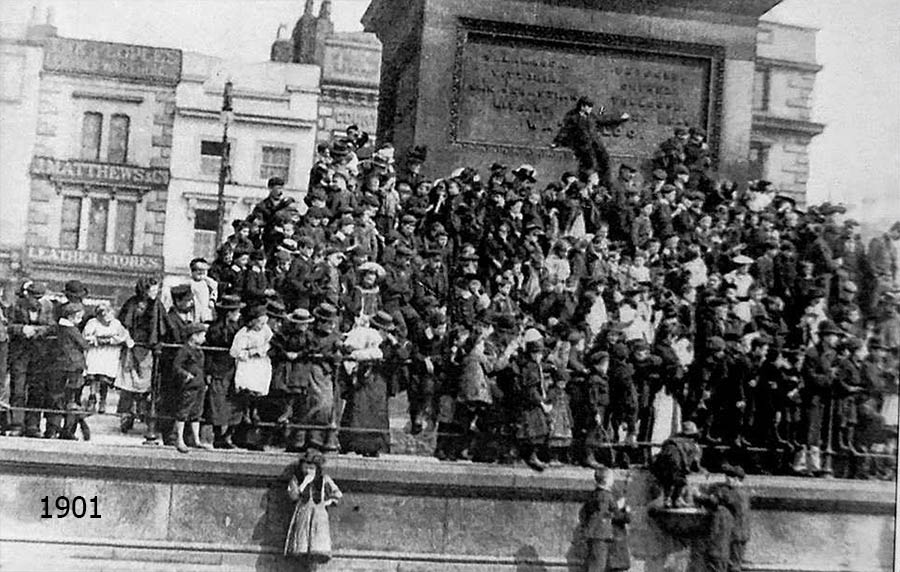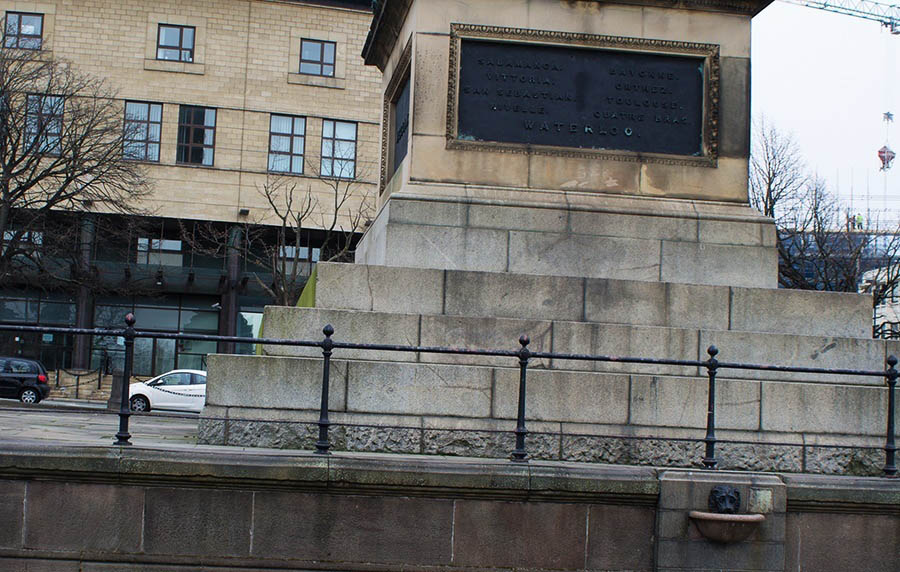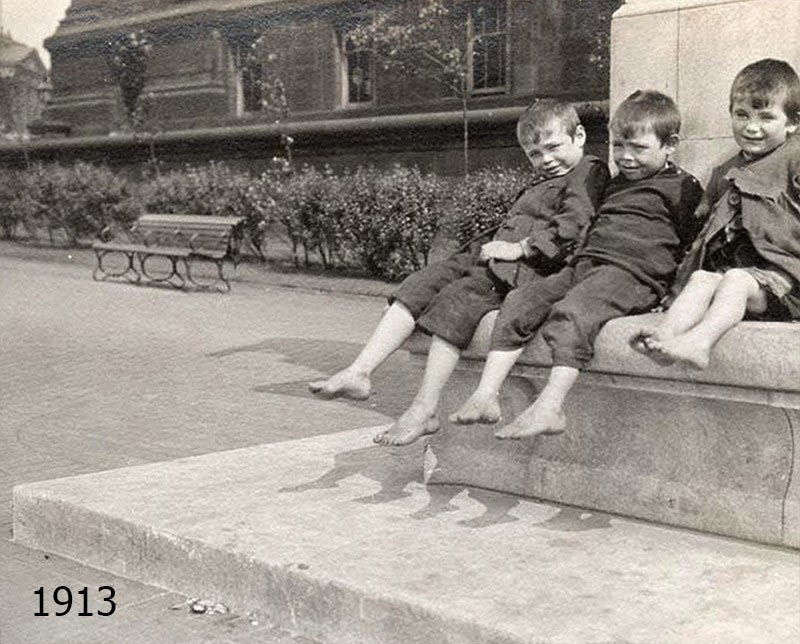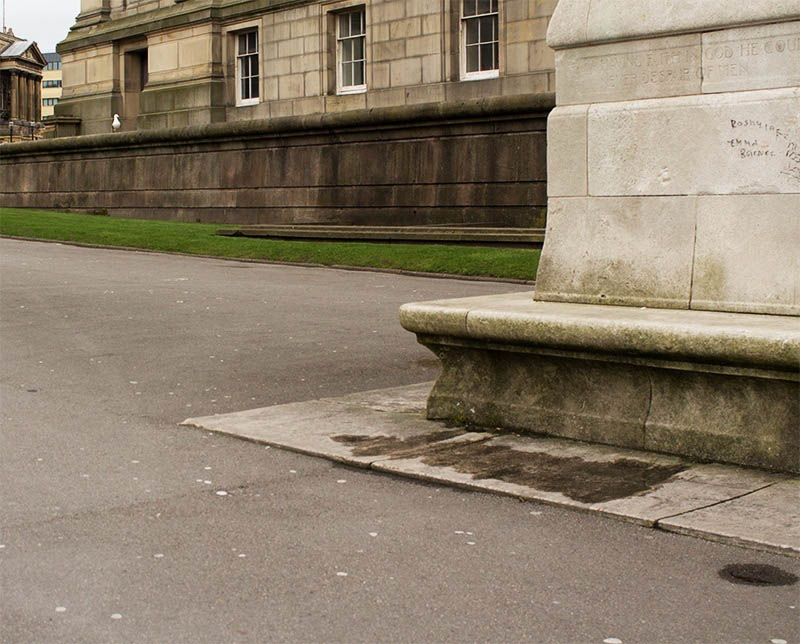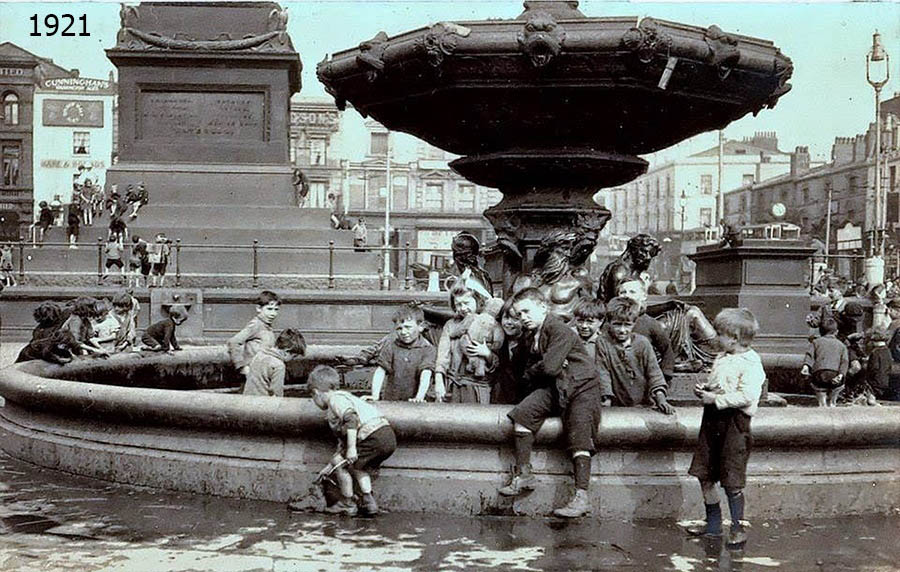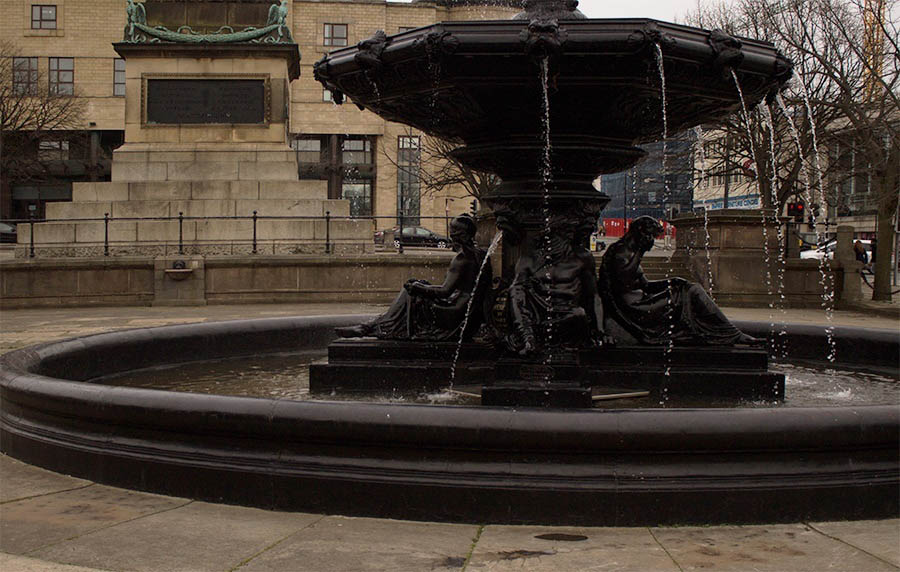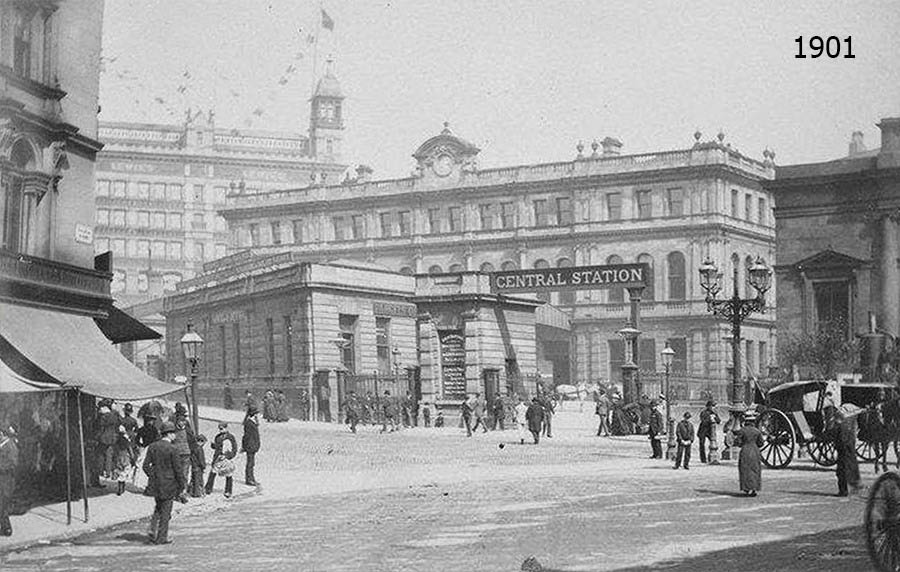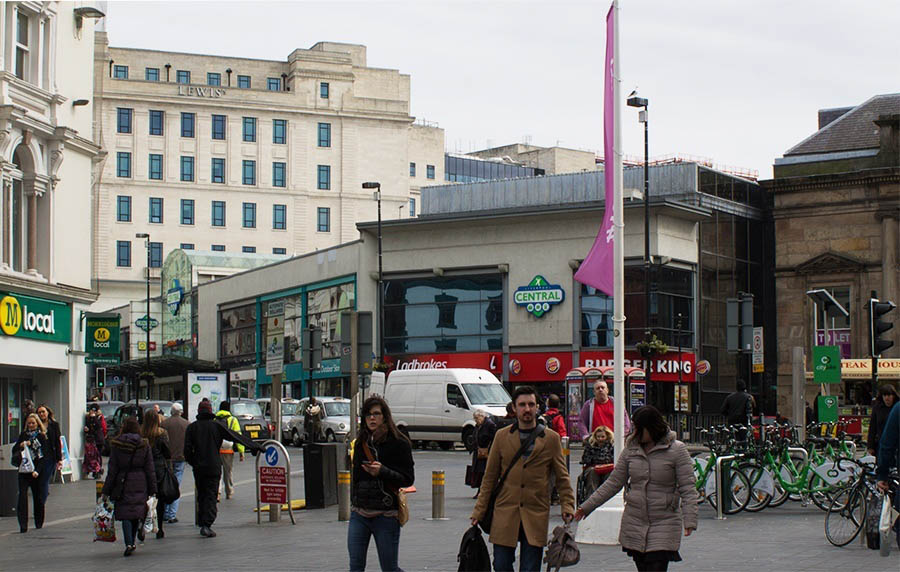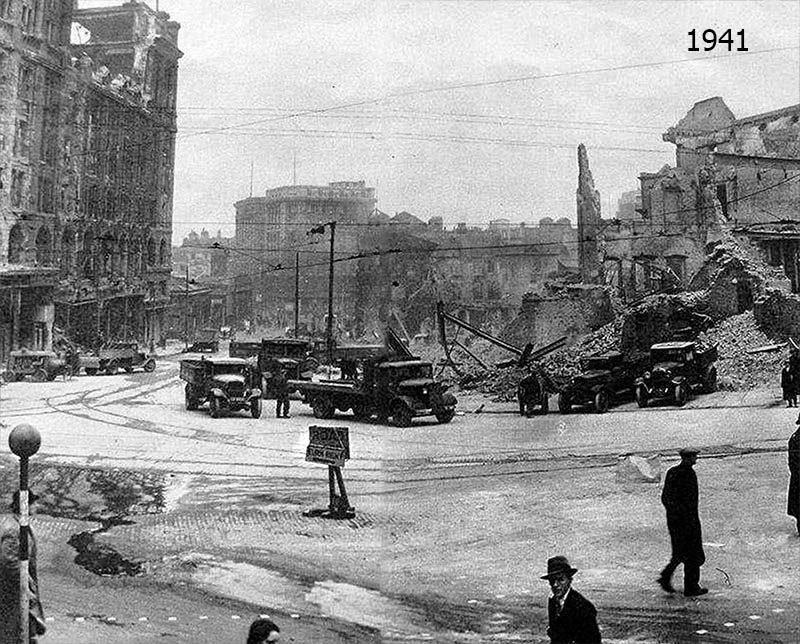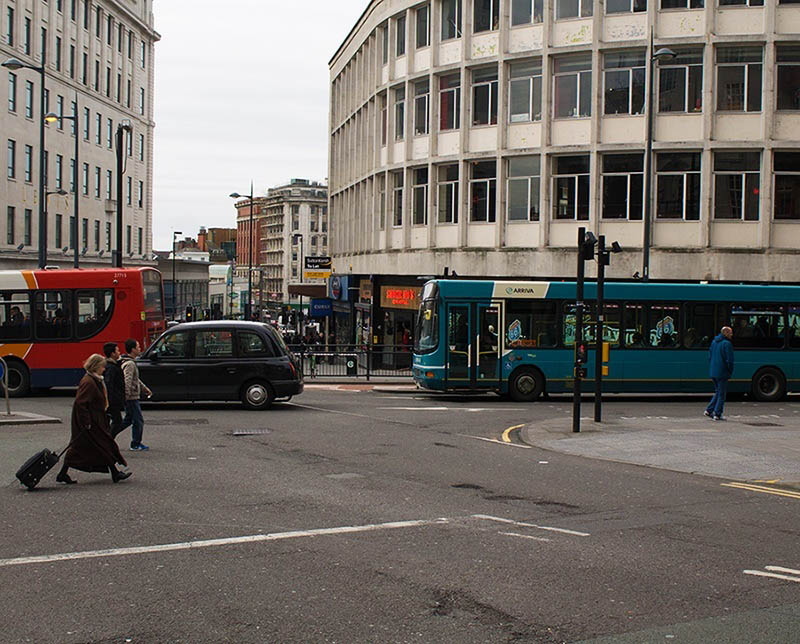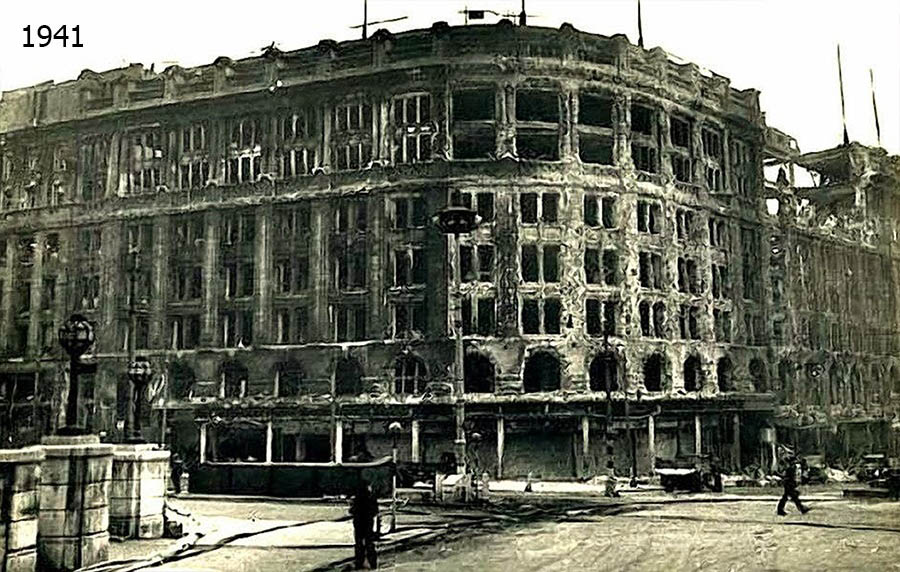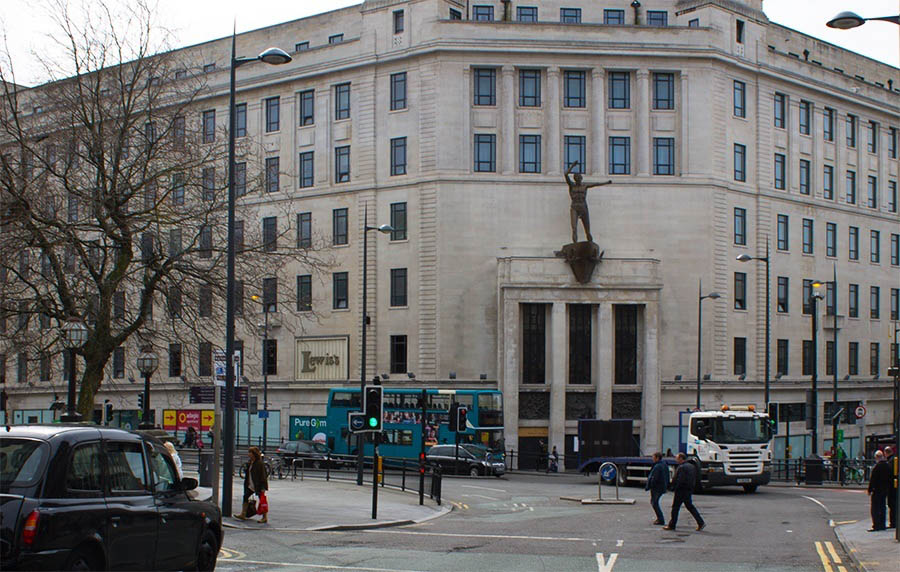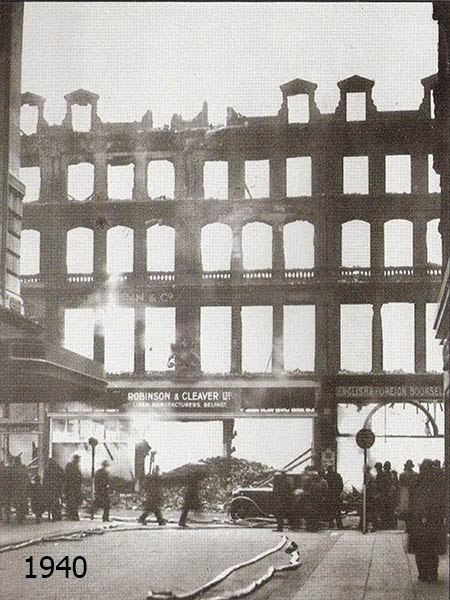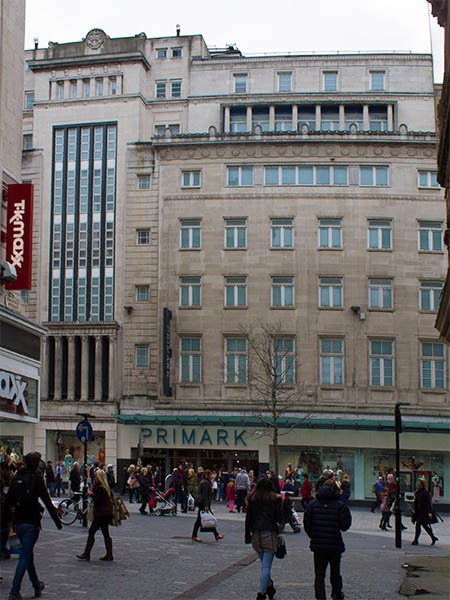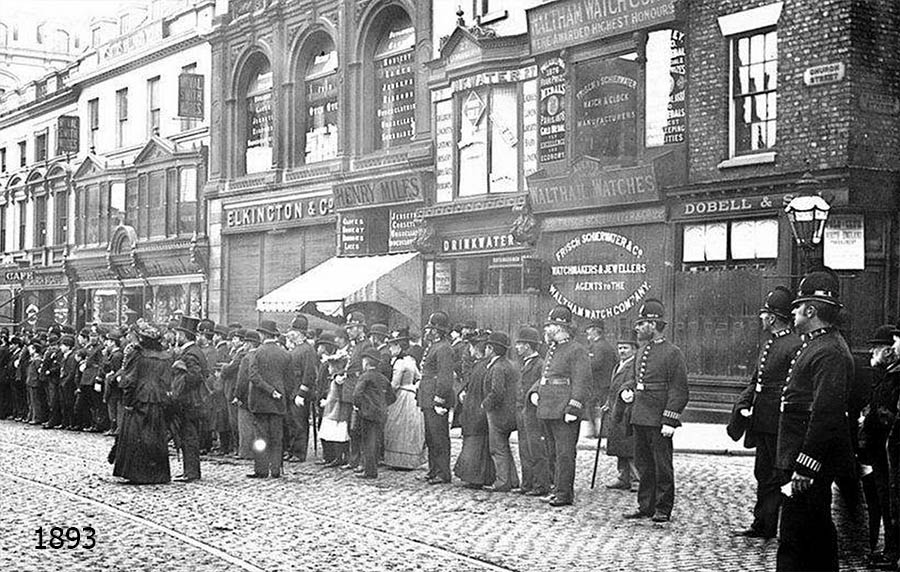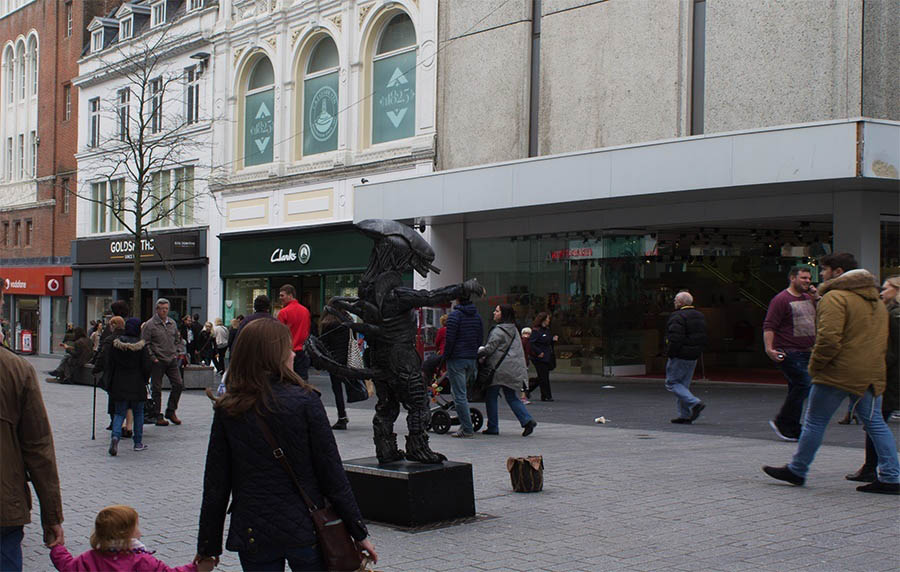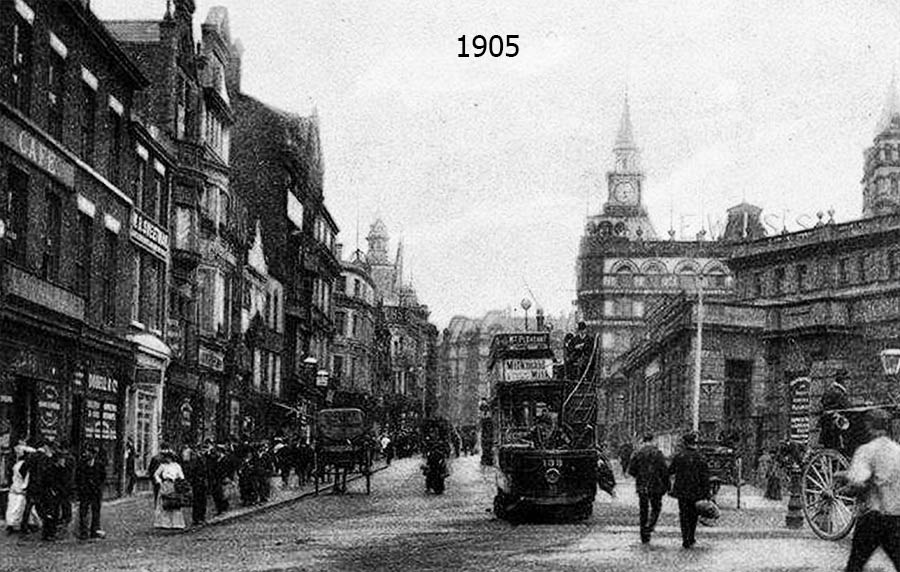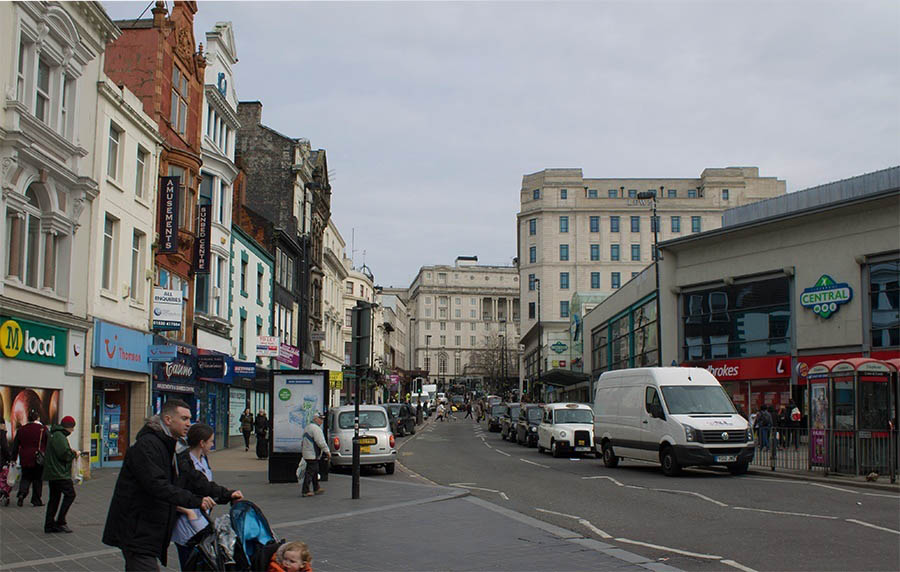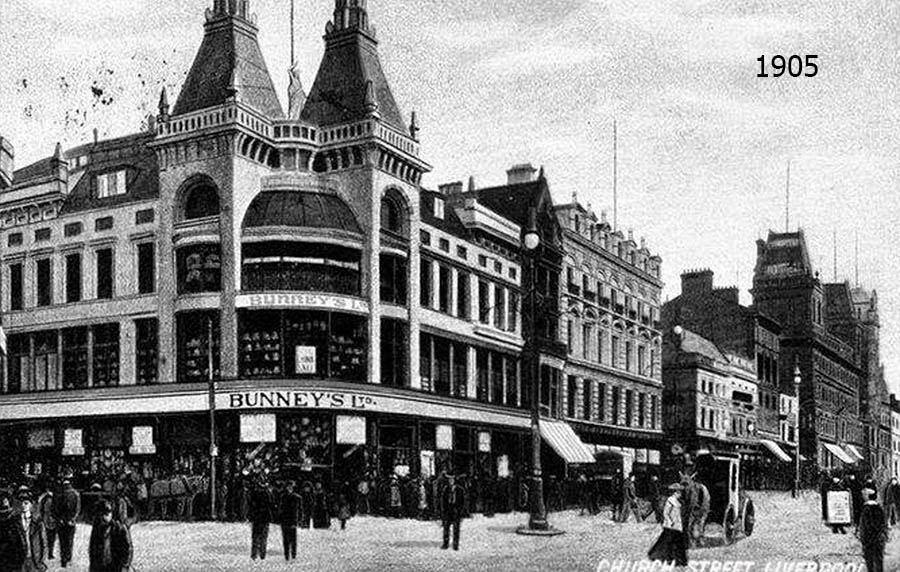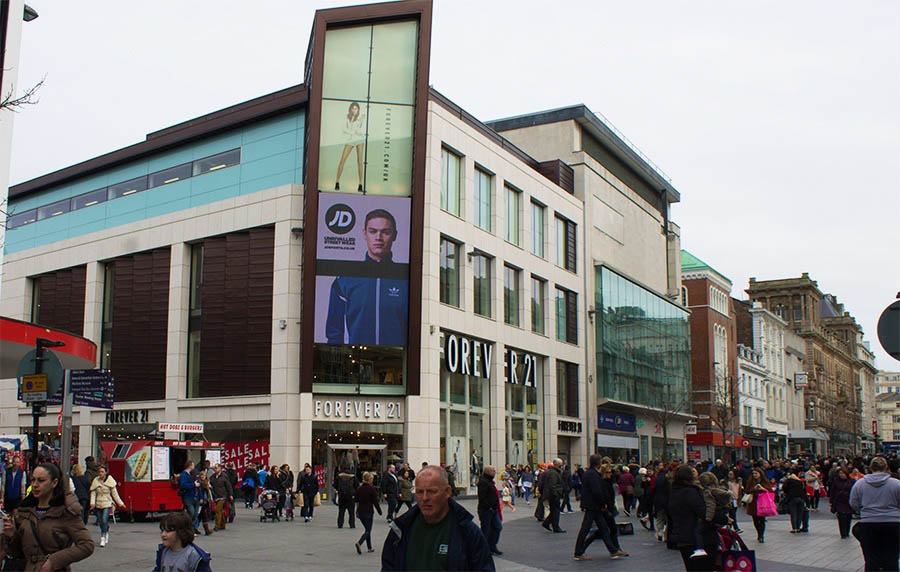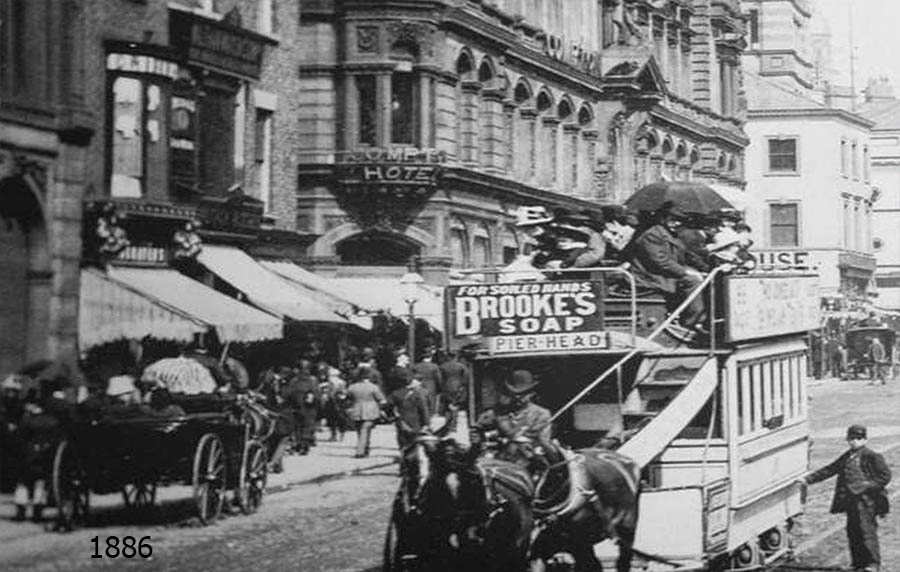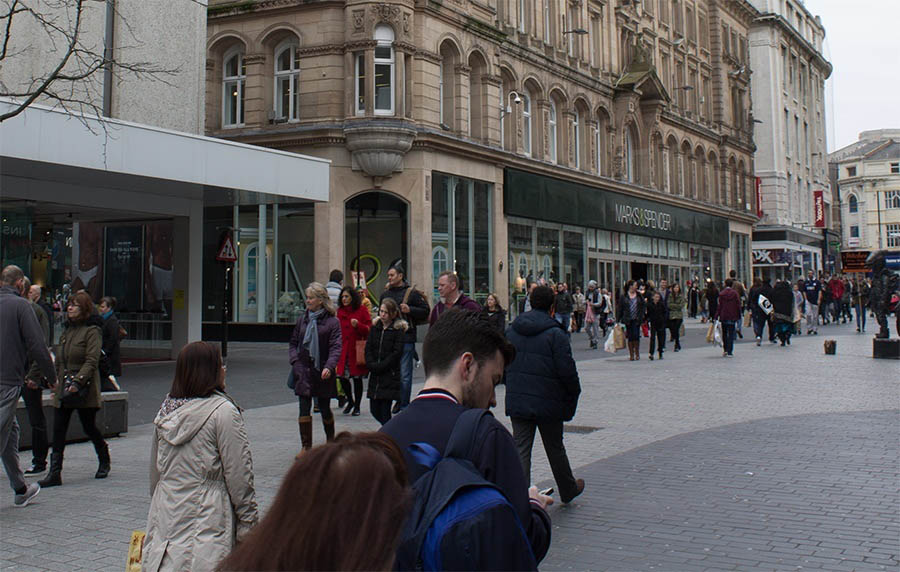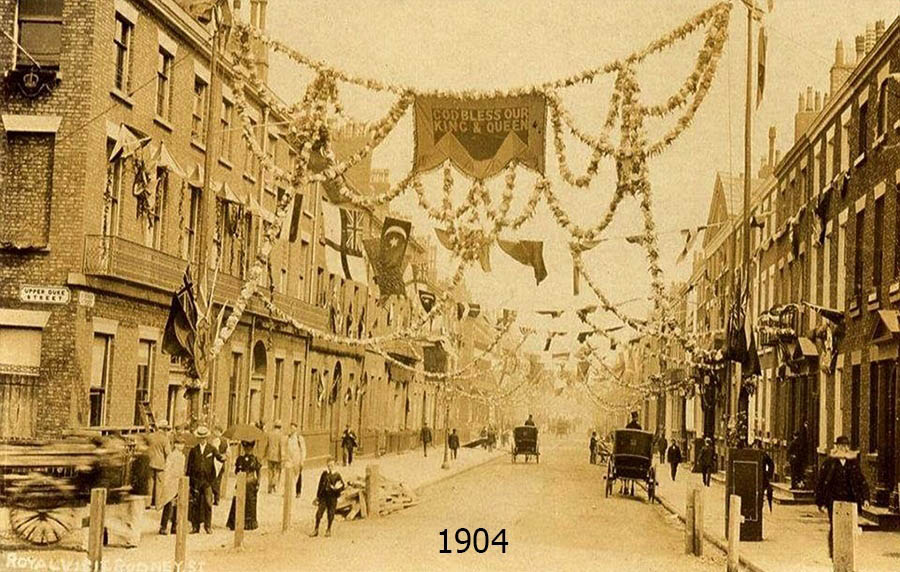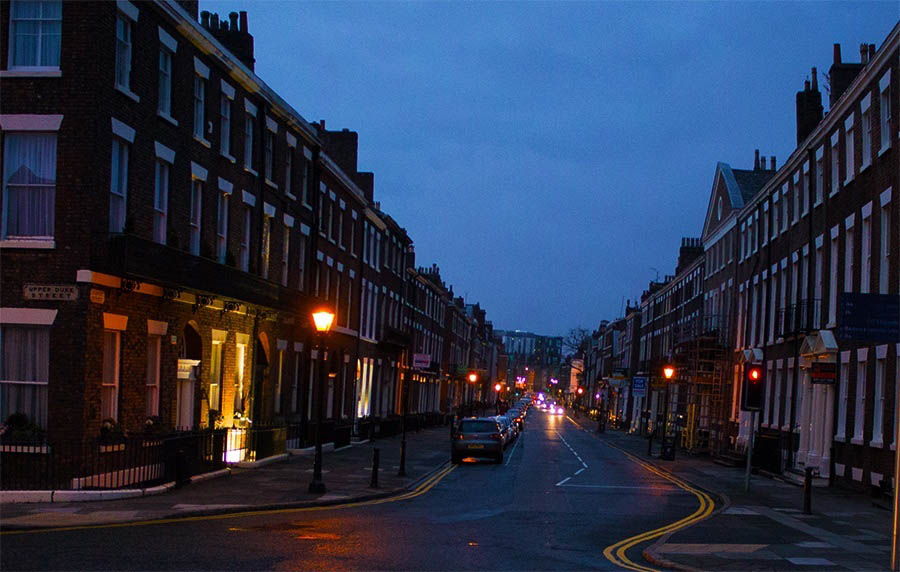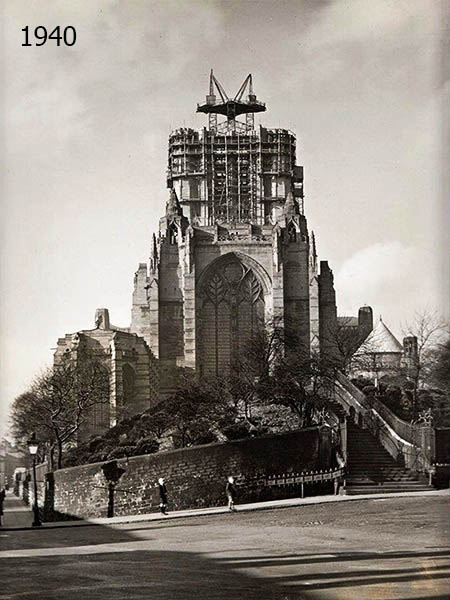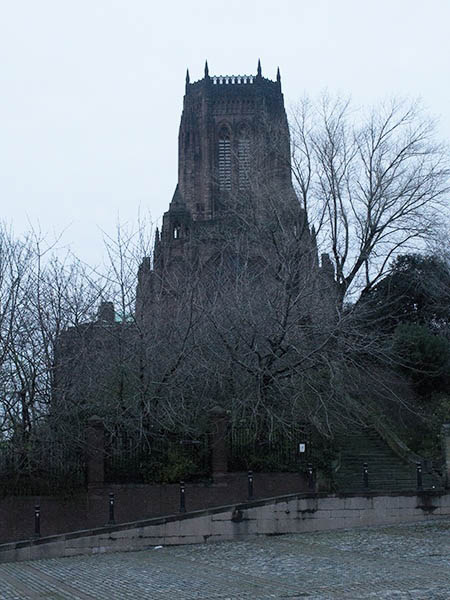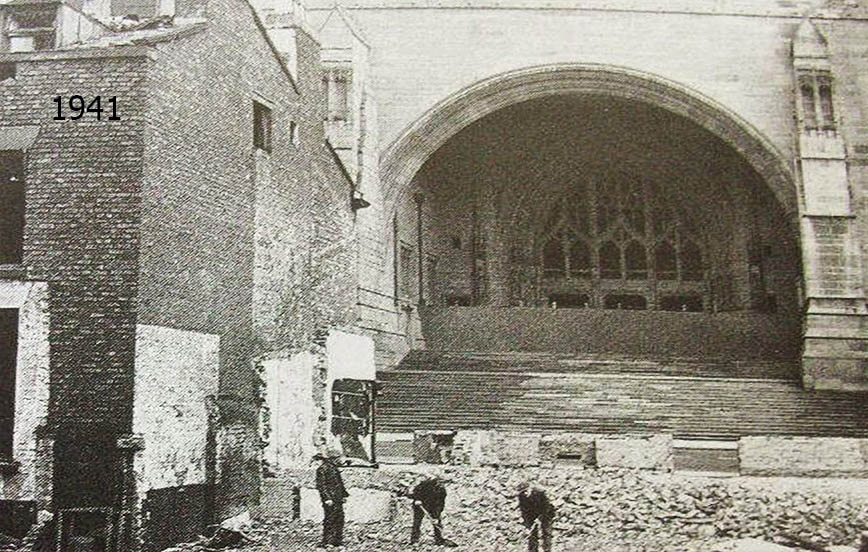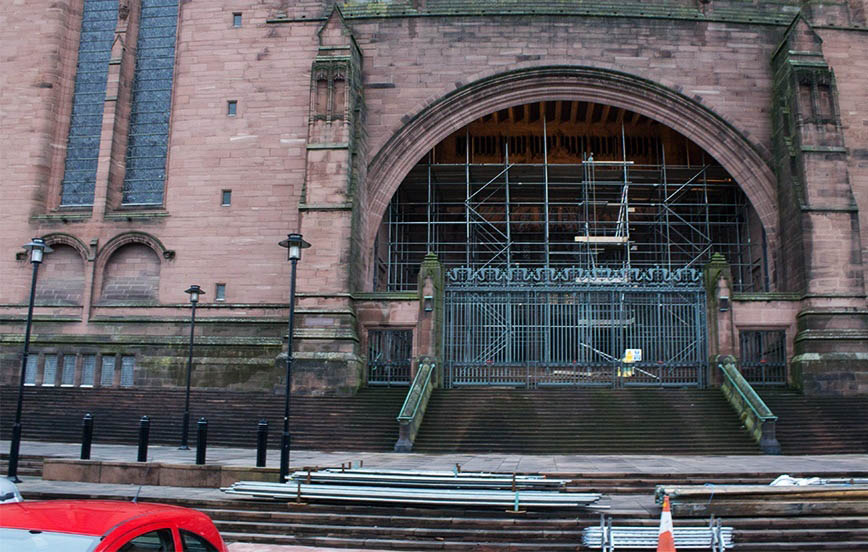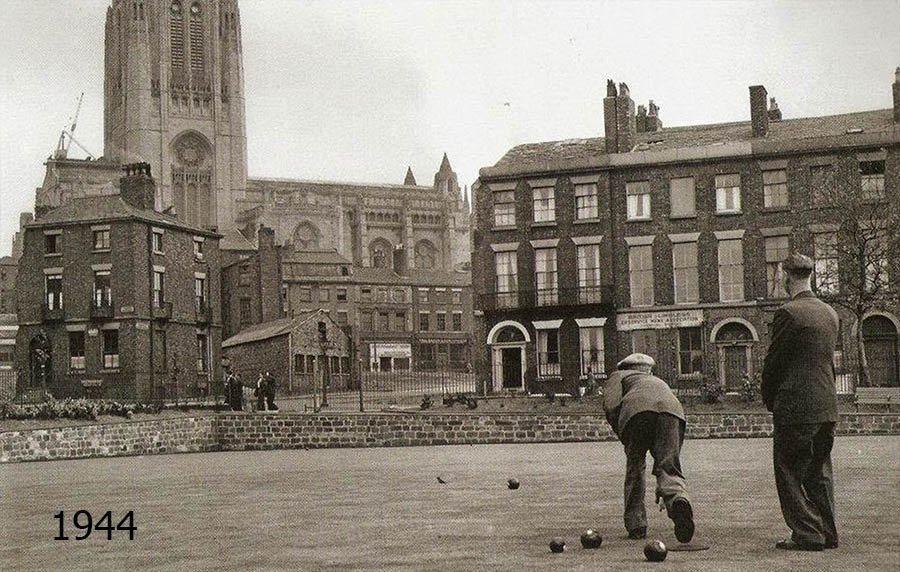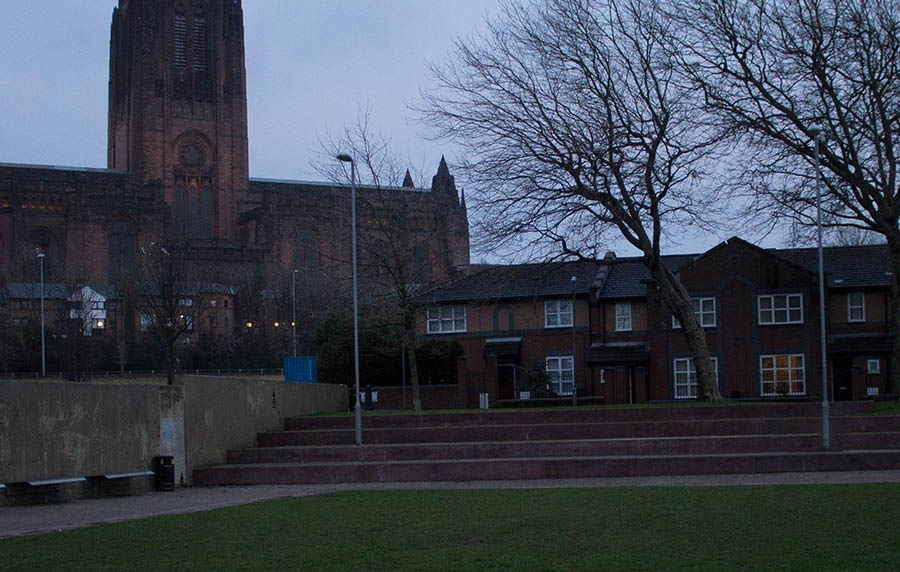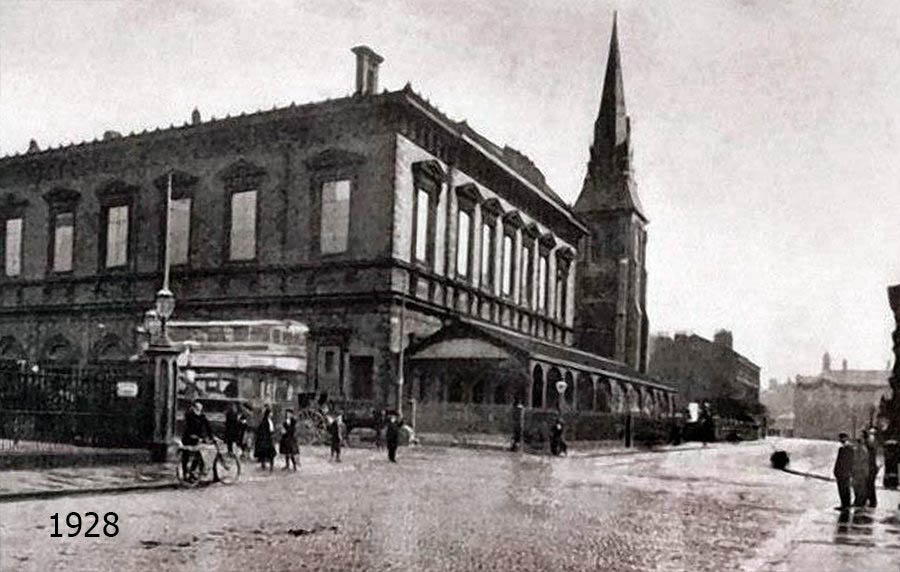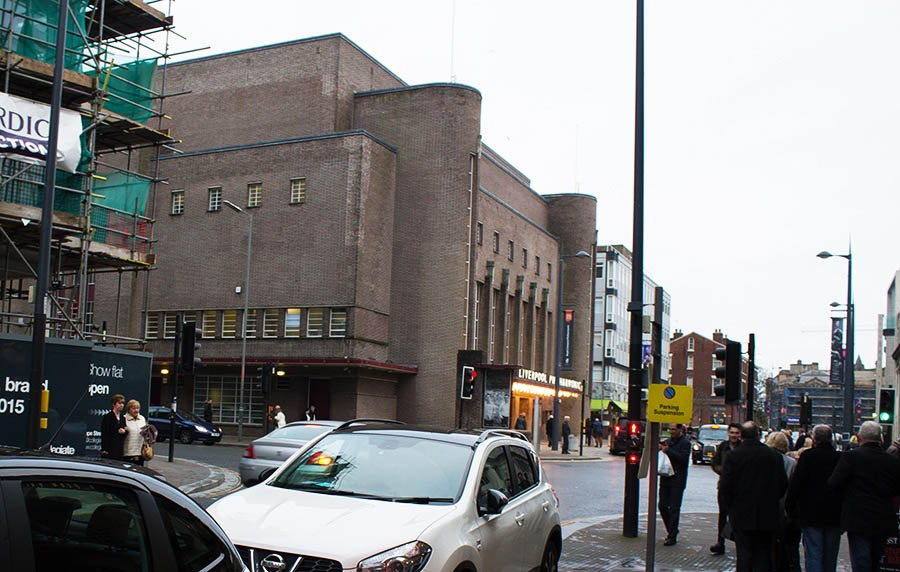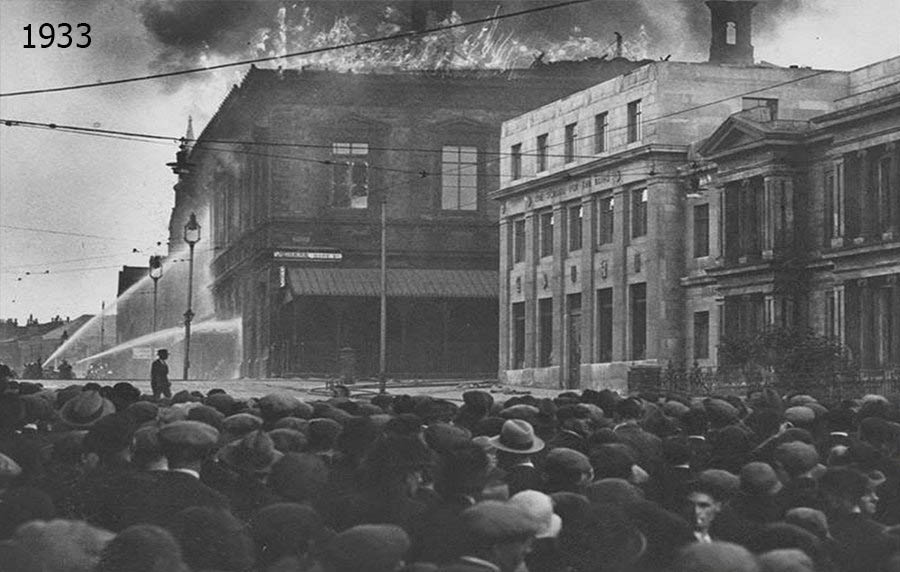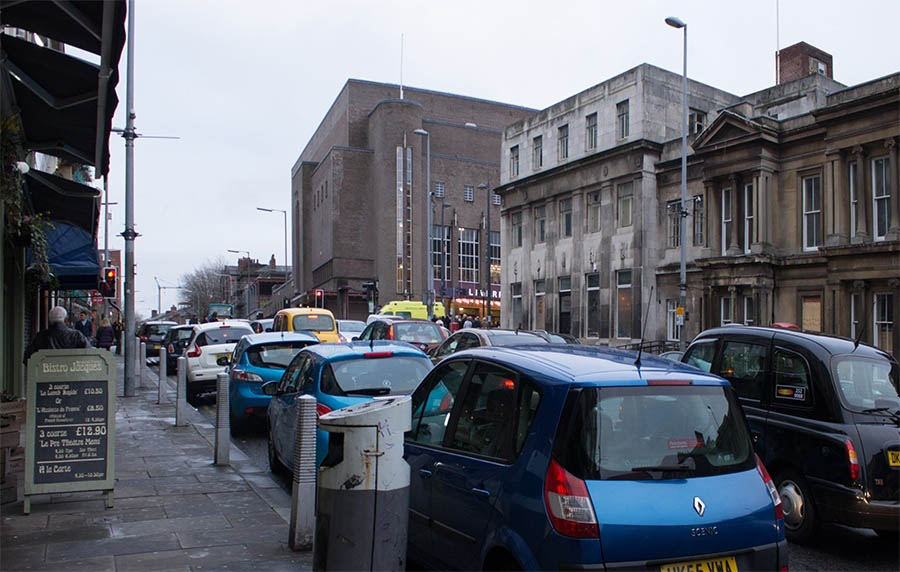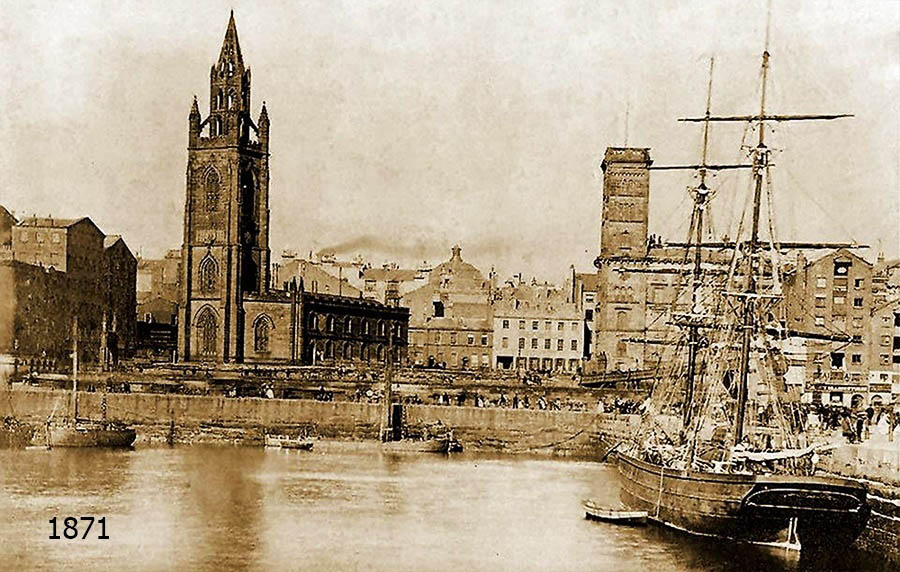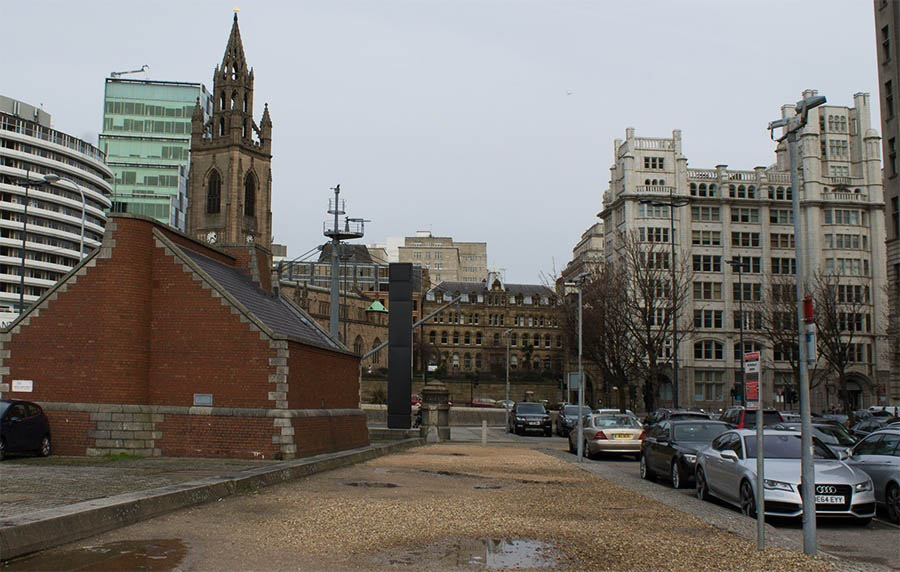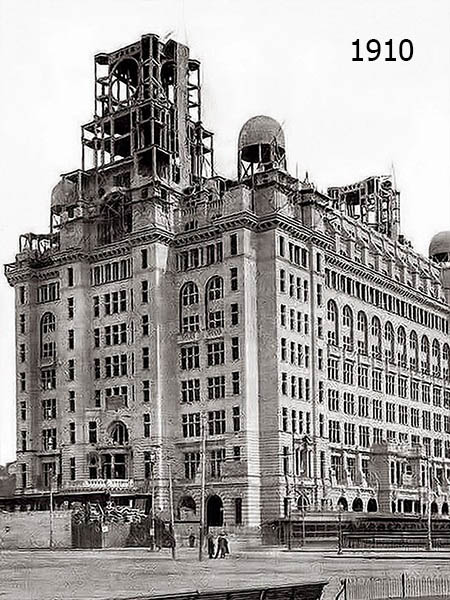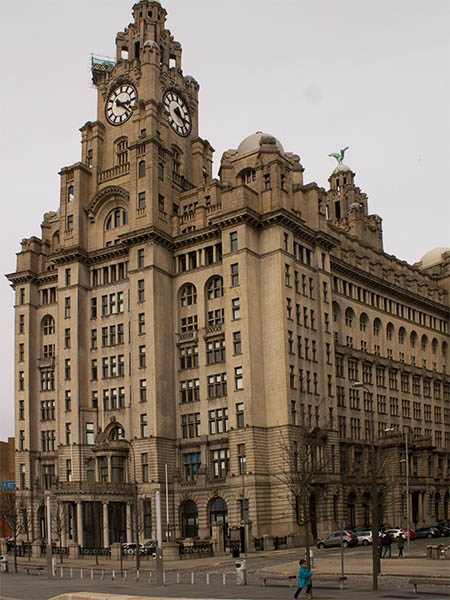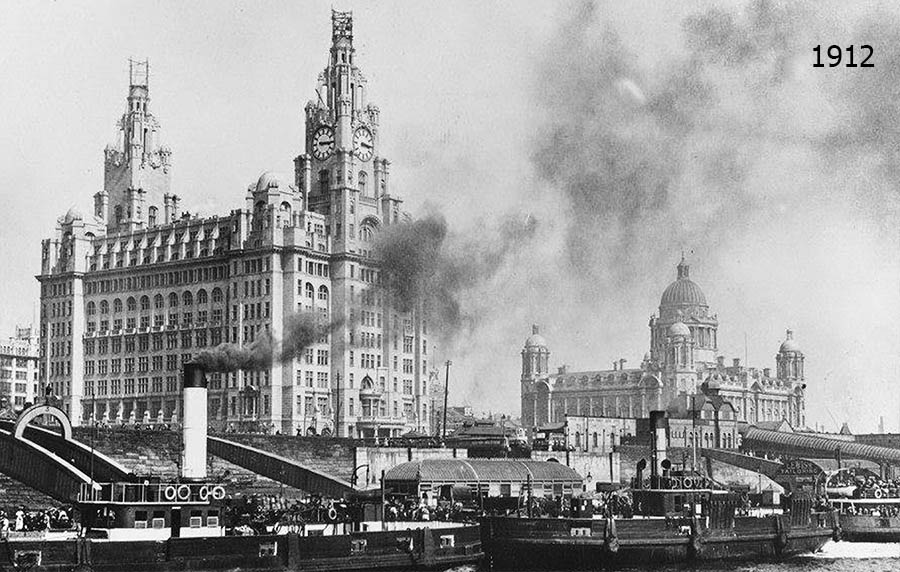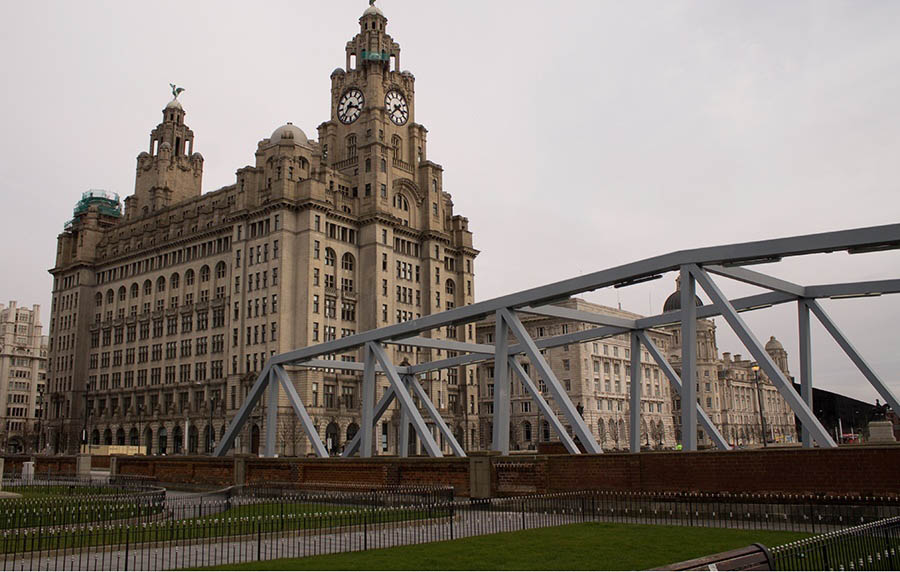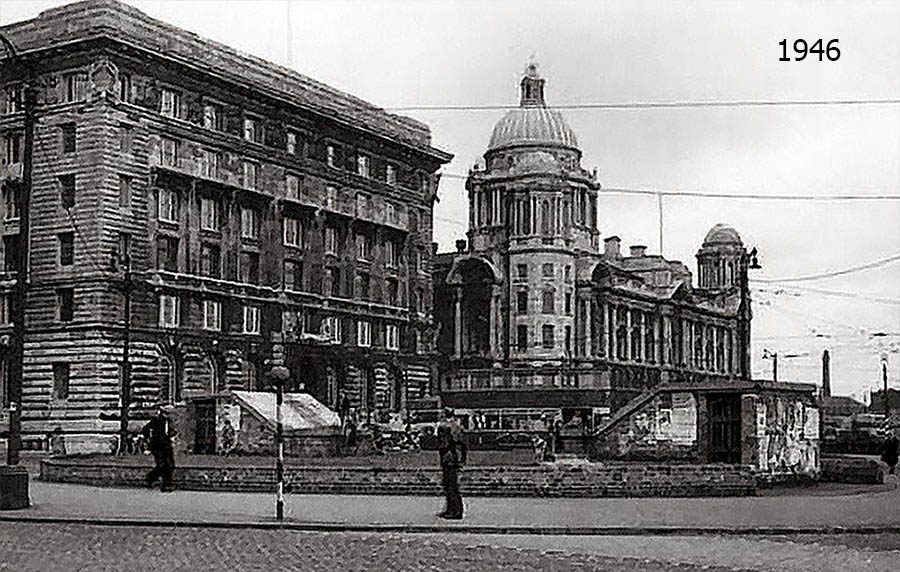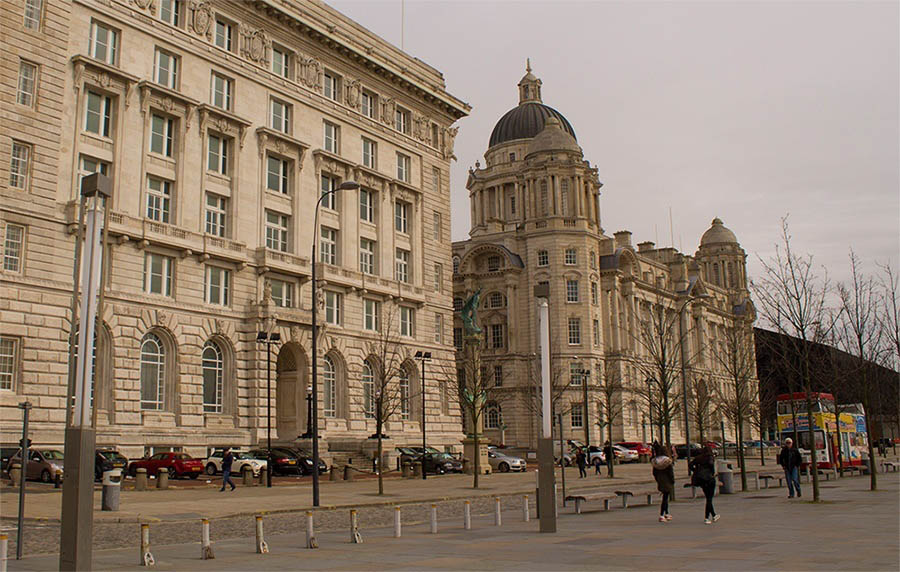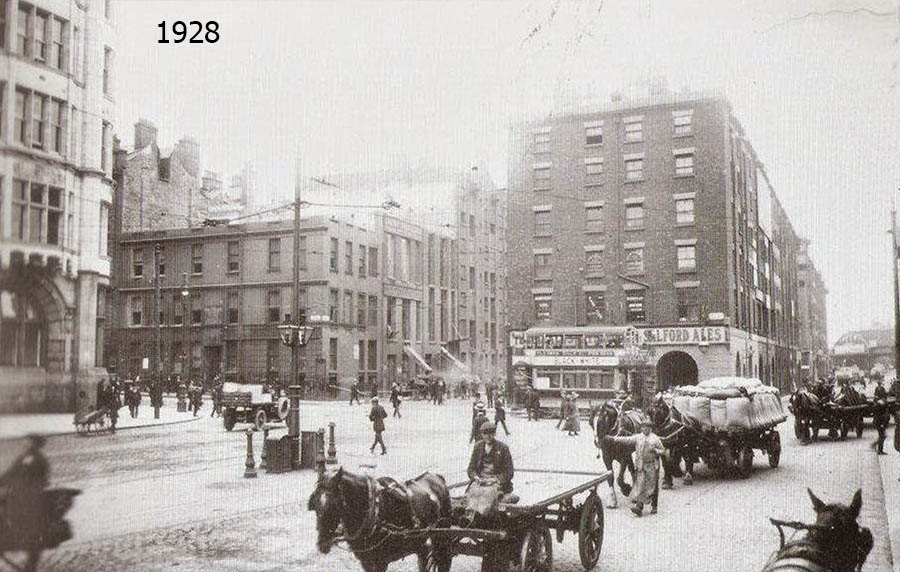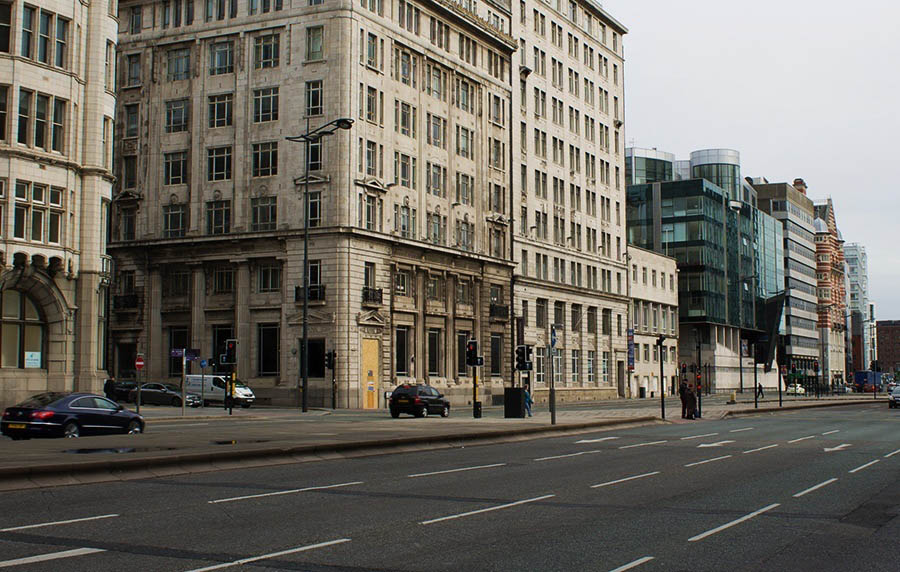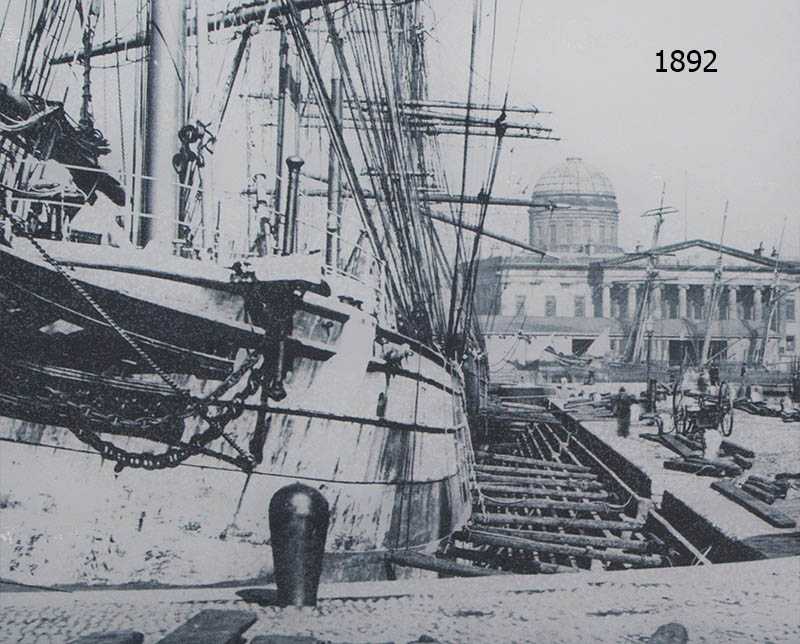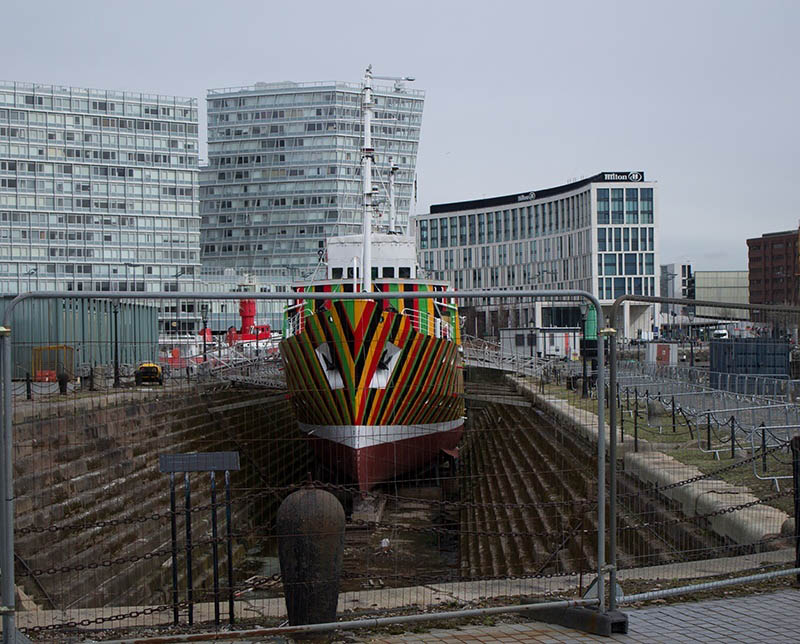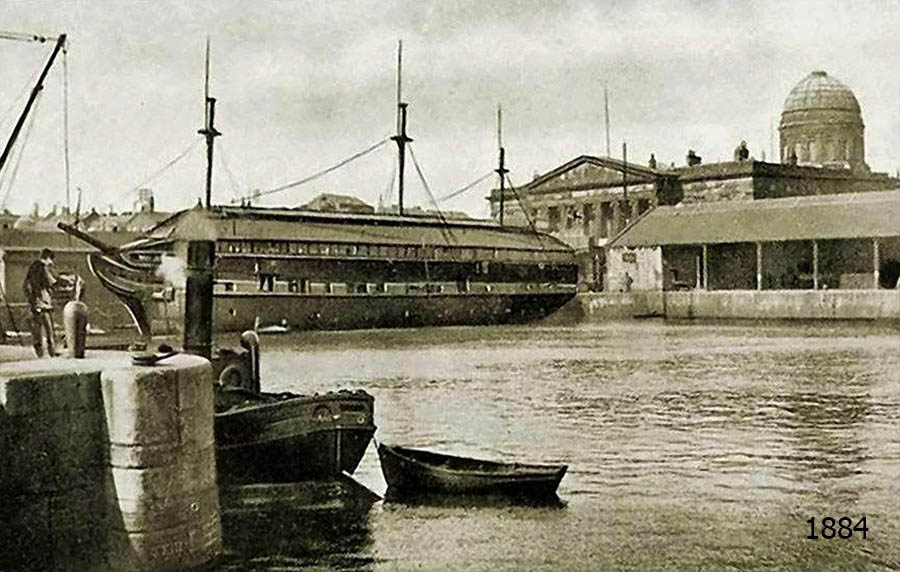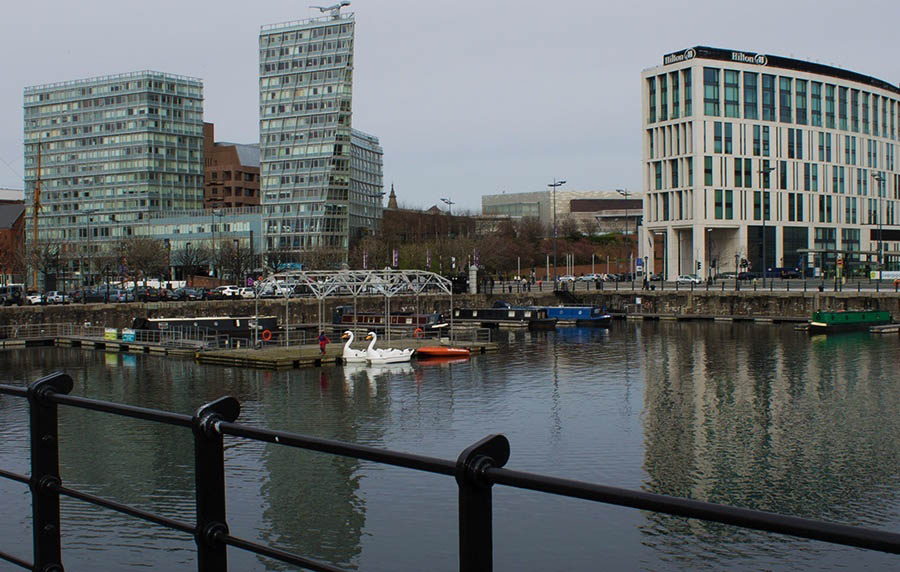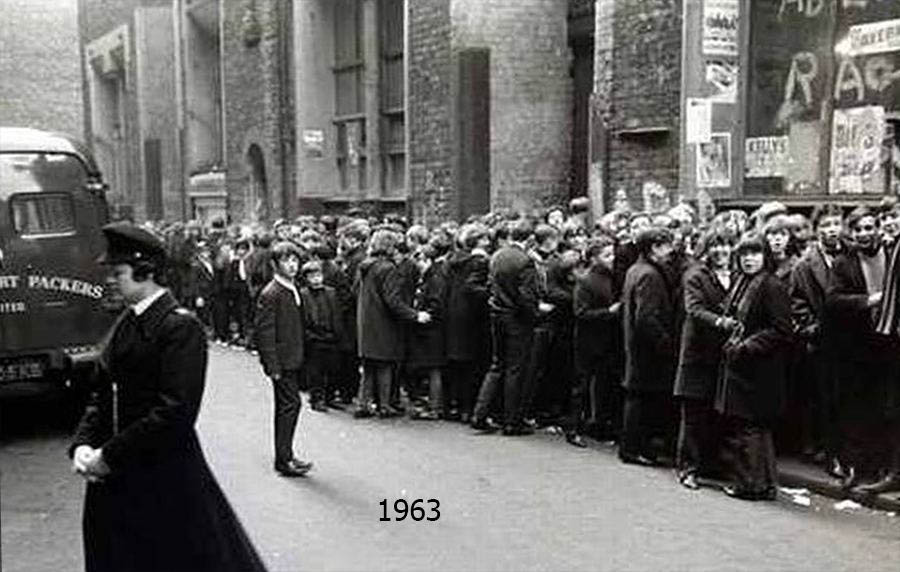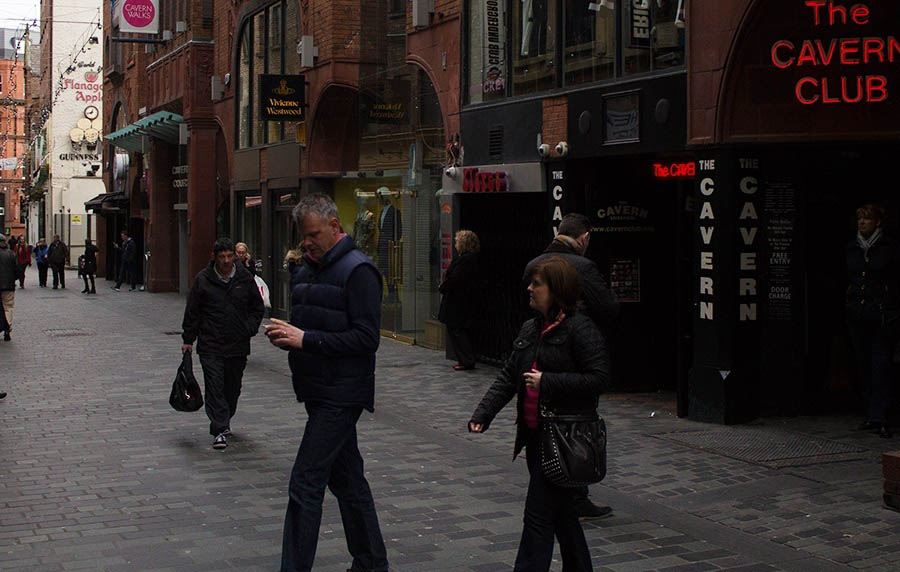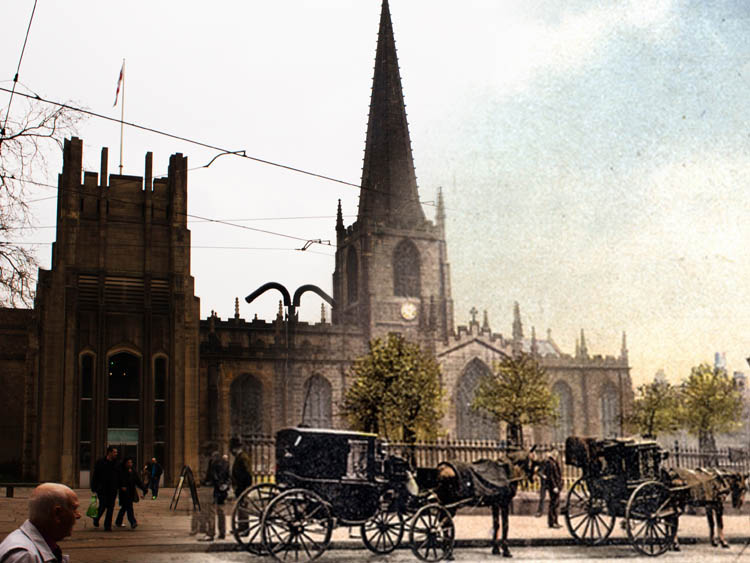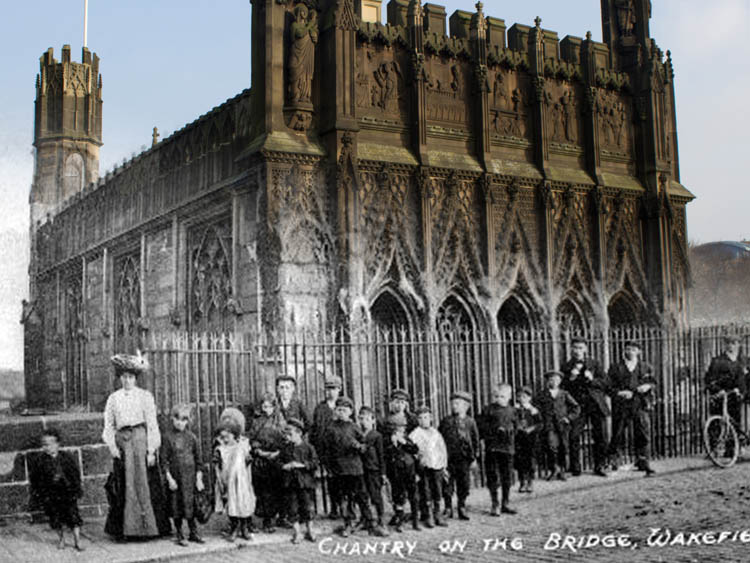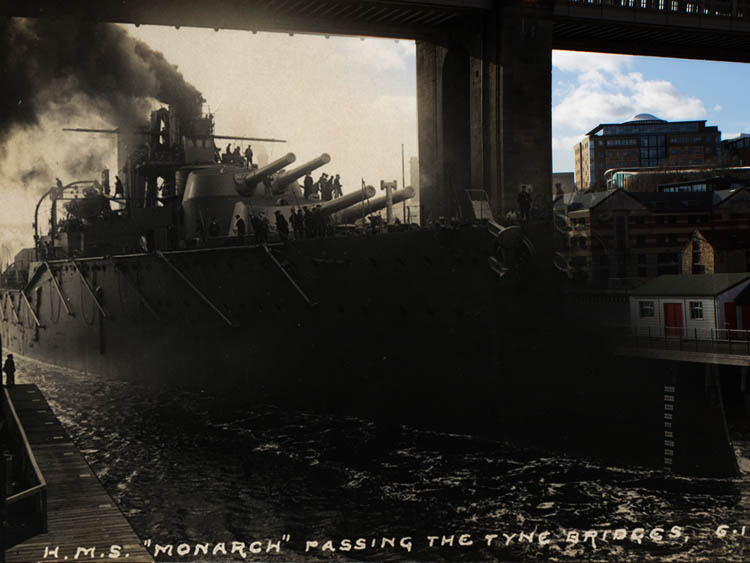Partner City
Liverpool
The New York of Europe
As Britain's gateway to the Atlantic, in the age of imperial glory Liverpool rose to become one of the wealthiest cities on earth. The story of this city broadly mirrors that of the British Empire as a whole. Beginning as a relatively minor fishing town astride the Mersey whose name possibly meant "Muddy pool of water," Liverpool began to grow when the first shipments of sugar and tobacco from the New World arrived. In exchange textiles and manufactures from the area around Manchester were exported from Liverpool's docks. Soon this trade took on a more sinister nature: in 1699 the Liverpool Merchant set off for Africa, where she took on a cargo of 220 slaves. After the horrific Middle Passage, these people were dumped in the West Indies to be worked to death on the sugar plantations. The ship returned to Liverpool with a rich cargo of sugar. And so began Liverpool's ignominious association with the Triangle Trade, which enriched Liverpool's merchants while ruining the lives of millions of Africans. At one point 40% of all slaveships taking the Middle Passage sailed from Liverpool. But it was to be a Liverpool politician, William Rosscoe, who spearheaded drive that led to the ultimate abolition of the slave trade in 1807. The end of the slave trade roughly coincided with the beginning of the Industrial Era, during which Liverpool's fortunes would rise to dizzying heights. The port was rapidly becoming one of the world centres for textile import and export, supplying the cotton mills of Lancashire with raw cotton from across the oceans. Prosperous and forward-looking, Liverpool became renowned as home to a number of firsts: the first commercial wetdock, the first passenger railway line (connecting it with Manchester), the first public library and the first scheduled trans-Atlantic passenger service. A brash confidence permeated the city and fantastic architectural works were commissioned, from the Albert Dock and the Three Graces on Pier Head, to the William Brown Library and St. George's Hall. These buildings helped make Liverpool a World UNESCO Heritage City in 2004. Liverpool's importance also made it a target for German bombs, and in the Liverpool Blitz large parts of the city were flattened and hundreds killed. Convoys, Britain's maritime lifeline during the Battle of the Atlantic, docked in Liverpool while liners evacuating children to Canada departed from her harbour. My grandmother and her sister were on one of those liners. After the war Liverpool declined in relative importance until the advent of containerization rendered her docks obsolete. Almost overnight thousands were out of work and in the 1980s unemployment reached a shocking 30%. The population shrank and the docks silted up. The one bright spot in the post-war period was the evolution of the Merseyside Beat, pioneered by the Beatles, which put Liverpool smack dab in the middle of the global music map. The last two decades have seen a sudden and dramatic reversal of the city's fortunes, probably most powerfully represented by the 2004 designation of Mercantile Liverpool as a World UNESCO Heritage Site. Unthinkable 30 years ago, today Liverpool is one of the top tourist destinations in the United Kingdom and it grows more popular every year. Liverpool has harnessed its past to pave the way to a bright future. The Then photos are courtesy of the excellent Liverpool Picturebook page. I took the Now pictures in April 2015.
Explore
Liverpool
Then and Now Photos
William Brown Library
1895
It looks like a busy day in front of the William Brown Library and Museum. Cabs crowd the street and an interesting variety of people wander the streets. One of the men on the right appears to be channeling Abraham Lincoln. The building itself was designed in the imposing Neo-Classical style popular in Liverpool, and opened its doors in 1860.
Royal Visit on Lime Street
1904
Crowds have gathered for a royal visit at the North Western Hotel on Lime Street. Horse guards preparing a salute are the focus of attention. The hotel, a fantastic example of Renaissance Revival style, was built for railway travelers in the 1870s. The hotel closed down in 1933 and remained closed and derelict for 60 years. It was only in 1994 that John Moores University saved this wonderful building, purchasing it and converting it into student housing.
Police During Strike
1911
Police from Birmingham arrive at Saint George's Square during the great Liverpool general transport strike. The strike, which began amongst merchant seamen and spread to a whole range of industries, paralyzed much of the city for the summer. Police baton charges dispersed crowds and soldiers from the 18th Hussars opened fire on strikers, killing two. By the end of the unrest 3,500 British troops, primarily from outside Liverpool, were stationed in the city to maintain order.
Mounted Police During Strike
1911
More police deploying in Liverpool during the general transport strike. Few of the buildings survive.
Children on the Wellington Monument
1901
People are gathered at the Wellington Monument to celebrate May Day.
Children Sitting
1913
A trio of barefoot boys relax on a statue pedestal in Saint John's garden by Saint George's Hall.
Children at the Steble Fountain
1921
Children play in the Steble Fountain at the top of George Brown Street.
Liverpool Central Station
1901
Liverpool's old Central Station. The station and the building at the left rear were destroyed in the Blitz, as we will soon see.
Blitz Damage
1941
Liverpool was pummelled by the Luftwaffe in 1940 and 1941. We see here large tracts of the city centre have been flattened by German bombs, though the two buildings in the centre distance have survived unharmed.
Burned Out Ranelagh
1941
Terrible damage inflicted by German bombing on the Ranelagh.
Bombed Out Church St.
1940
People grimly try to get on with their lives amidst the gutted remains of stores on Church Street. The building on the extreme left survives. This was the so-called Christmas Blitz in December 1940, when especially severe bombing on December 20-22 killed dozens of people in shelters.
People on Church St.
1893
Police and people wait at the corner of Church Street and Tarleton Street. A number of the buildings pictured were destroyed in the Blitz. Today an alien is performing there.
View of Ranelagh St.
1905
A rather grainy photo giving a view up Ranelagh Street. Asides from a couple buildings on the left, the environment has changed dramatically.
Bunney's Gift House
1905
Bunney's Gift House on Church Street and Whitechapel. Selling gifts, souvenirs, and presentations, Bunney's isn't really all that different from the Forever 21 that occupies the space today, though the marketing is a bit different.
Omnibus on Church St.
1886
A horse drawn tram on Church Street. Horse drawn trams do look like they would have been rather fun to ride.
Decorations on Rodney St.
1904
Rodney Street has been jovially decked out for a visit from the King and Queen. Few occasions allowed people to give vent to their patriotism like a royal visit.
Building Liverpool Cathedral
1940
Construction of the tower on Liverpool's massive cathedral nears completion. When construction began in 1904 the cathedral was only the third to be built in the United Kingdom since 1600 and an imposing Gothic yet modern design was selected.
Bomb Damage at the Cathedral
1941
Houses used to come right up to the side of the cathedral. They were damaged by German bombs during the Blitz.
Lawn Bowling
1944
The cathedral seen from the Great George Square bowling green. You can see one of the transcepts has not been completed yet. The cathedral would not be fully completed until 1960.
Philharmonic Hall Burning
1933
The old Philharmonic Hall on Hope Street burning down.
George's Dock
1871
George's Dock, one of Liverpool's earlier docks. It was built in 1771 and remained in use for over a century. In 1899 it was filled in to create Pier Head, the site of Liverpool's main dock offices. In the background is the Church of Our Lady and Saint Nicholas.
Building the Royal Liver
1910
The Royal Liver Building under construction. One of the first buildings in the world to be built of reinforced concrete, it housed the Royal Liver Assurance Group, a purveyor of life insurance.
Royal Liver Building
1912
Construction nears completion on the Royal Liver Building. In the background is the Port of Liverpool Building which was finished in 1906. Between them is an empty space that would shortly be filled by the Cunard Building. Together the buildings became known as the three graces. They dominate Liverpool's waterfront and are world renowned for their fantastic proportions and innovative design, symbolic of the city's soaring ambition.
Liverpool and Cunard Building
1946
Another view of the Port of Liverpool Building, as well as the Cunard Building. Air raid shelters left over from the Second World War can be seen in the foreground. I really did think I was the right distance away when taking the photo, can't win them all.
Gore Piazza
1928
Carters leading their horses down the busy Goree Piazza. The area has changed so dramatically that one could be forgiven for thinking it isn't the same spot, but the building on the far left says otherwise.
Drydock
1982
The oldest drydock in Liverpool, these docks were used for hauling up ships and scraping the barnacles off the bottom. Today a rather festive coloured ship has replaced the sailing ships of another era.
Salthouse Dock
1884
The Salthouse Dock when it was a working dock. The photo is from just about the right perspective, just a bridge has extended over the pier on the left in the old photo and I wasn't able to include it in mine.
Crowd for the Beatles
1963
Crowds line up outside the Cavern to catch a show by those up-and-comers, the Beatles. The original Cavern Club was bulldozed in a fit of absent-mindedness in the 1970s. When the historic and culture value of the venue was belatedly realized the Cavern was rebuilt using many of the same bricks, though the building's exterior apparently bears little resemblance to the original.




